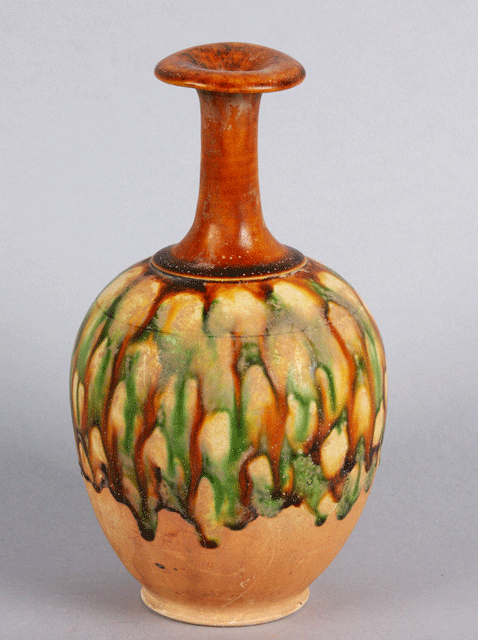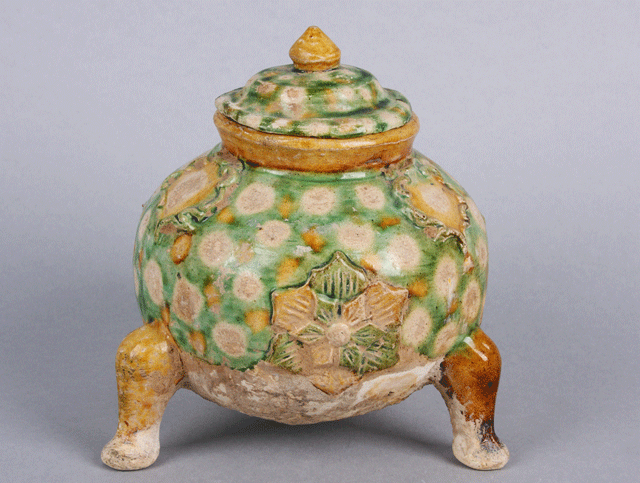
2012.91.57, sancai (polychrome) jar; Tang dynasty (618–907 CE)
Eason Eige Collection; photo by B. Bernard

2012.91.57, sancai (polychrome) jar; Tang dynasty (618–907
CE)
Eason Eige Collection; photo by B. Bernard
Sancai, Chinese for "three colors," specifically refers to the use of intermingled glazes of different colors. If you were taught to "always draw within the lines," the use of seemingly uncontrolled colors may seem disconcerting at first. As this vase shows, however, it is possible to achieve harmony without formality. That's something that's evident in nature, but harder to achieve in human art.
The Tang potters certainly could keep such glazes from running and mingling, as you'll see from the next image. On the tripod jar shown below, the colors are very similar but form a more regular pattern. The result is pleasing but lacks the dynamic feel of the first jar.

2012.91.56, Polychrome tripod jar with lid; Tang dynasty (618–907
CE)
Eason Eige Collection; photo by B. Bernard
(For a view of the tripd jar with its lid removed, click here.)
See source code for copyright information. Page last revised on
April 23, 2014.
Please report problems to toh@unm.edu